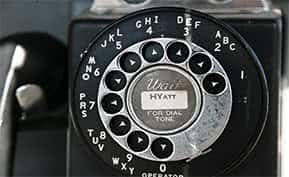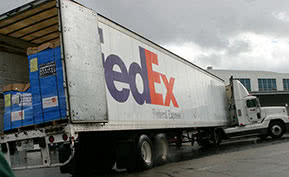Ecommerce
Email Marketing Software
Marketing Automation
How to Use Post-Purchase Email Automation to Retain Customers

Converting a customer does not mean that you are done doing business with them. Quite the opposite. Conversions actually open new doors, providing opportunities to conduct additional transactions and to forge long-term and profitable relationships with your customers.
Repeat business is not only cheaper than acquiring new customers, but a study published in Forbes showed that a 5% increase in customer retention can boost profits by 25% to as much as 95%.
One tool in particular, email automation, can be especially effective for retaining customers and building brand loyalty. You can do a great deal through strategic, automated, post-purchase emails, including keeping in touch with customers, turning inactive customers into active buyers, recommending upgrades and more. All that you need is a little bit of creativity and business acumen.
Confirmation messages
You need not wait for days or weeks to send the first post-purchase email. The perfect time to send it is right after your customer converts.
A confirmation message assures customers that their transaction was completed successfully. It can contain an online receipt and a thank you message to show your appreciation.
You can also treat a confirmation message as an opportunity to gain additional customers, by offering the newly converted customer incentives to provide referrals. Another possibility is to further connect with your customers by placing social media buttons for them to follow your pages.
Product FAQs
Let’s admit it. Some customers buy products and then struggle to figure them out or understand how to get the most out of their features. Lack of knowledge about a purchased item can be a source of dissatisfaction, which could lead to bad reviews and returns.
Emailing product information, answers to frequently asked questions and resources containing recommendations will educate customers about their purchase. If they bought an action camera from your store, send them tips on how to adjust the camera’s settings to be able to capture spectacular shots. You can also include instructions on how to troubleshoot their gadget.
Your product FAQs can also include your return policy, contact information and information regarding how they can reach you in case of further concerns about their purchase.
Feedback and review request
A happy and satisfied customer will not have second thoughts about giving you positive reviews and feedback. Sending them a feedback or review request is your chance to hear their side, which you can use to build credibility and trust in your products and business as a whole.
You can ask them about their shopping experience, the level of customer service and the perceived quality of the product they purchased. Learn from recommendations and spot things you need to improve on. It pays to listen to your customers.
Reactivation emails
Remember those customers who bought from you a few months ago? They seemed to be very active before but have fizzled out for some reason. Perhaps they only need a little push? You’re in luck! A well written reactivation email lets you do just this.
Motivate past customers anew by sending them discount codes or offering freebies. If you don’t think they are ready for another purchase, nurture them again down the sales funnel with useful, relevant content such as tips, videos and guides.
Upsell and cross-sell emails
At some point, your customers may feel the need to buy an item related to their previous purchases, or something else that caught their eye. Always be open to the possibility that your customers may be ready to make another purchase from you. This is where great opportunities to upsell and cross-sell emerge.
Provide recommendations by adding “You may also like” in your emails. For instance, if they bought a smartphone from you, send them a list of accessories such as cases, wireless earphones and powerbanks.
Try to upsell these customers by offering them upgraded versions of their previous purchases. Use customer information and data analytics to predict their next purchase.
Expiration or replenishment reminders
As a marketer or seller, you are most likely very familiar with your product’s standard purchase cycle or the expiration of your customer’s subscription. Don’t miss out on a chance to ensure that customers renew their subscriptions or re-order products by sending them email reminders.
Birthday, anniversary and holiday emails
It pays to know your customers’ “special days”, such as birthdays and anniversaries. Sending them greetings on these days not only show how much you value your relationship with them, but it’s also another opportunity to give them ideas about what to get for themselves or their loved ones.
You could give them birthday discounts or special offers specific to the celebration at hand. On Mother’s or Father’s Day, send them recommendations regarding gift options for their moms and dads.
When you look at email automation as a strategy that goes beyond lead generation, you immediately realize its power to build brand loyalty and increase revenue. You may need to put in some time, manpower and resources to develop an effective post-purchase automation campaign, but the long-term returns will be well worth it.
Visit our free Top 10 Email Marketing Software report for more information.
Photo courtesy of Pexels user Life Of Pix.





